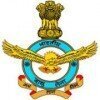Filter interviews by
Indian Army Interview Questions and Answers
54 Interview questions
Effective manpower management in security involves strategic planning, training, and resource allocation to ensure safety and efficiency.
Conduct regular assessments to identify security needs and allocate personnel accordingly.
Implement a shift rotation system to ensure adequate coverage while preventing fatigue.
Provide ongoing training to enhance skills and awareness among security staff.
Utilize technology, such ...
Effective management of MOP drills involves planning, execution, and evaluation to ensure safety and preparedness.
Establish clear objectives for the MOP drill, such as testing response times and communication protocols.
Conduct thorough training sessions prior to the drill to ensure all personnel understand their roles.
Simulate realistic scenarios that could occur in an emergency, such as a fire or security breach.
...
Defense focuses on national security and military operations, while civil security emphasizes public safety and emergency response.
Defense involves military forces protecting a nation from external threats, e.g., armed forces in combat.
Civil security focuses on protecting citizens and property, e.g., police and fire services responding to emergencies.
Defense strategies may include international alliances, e.g., NA...
I have diverse work experience across various industries, enhancing my skills and adaptability in dynamic environments.
Worked as a project manager at XYZ Corp, leading a team of 10 on a successful product launch.
Interned at ABC Nonprofit, where I organized community outreach programs, increasing engagement by 30%.
Gained customer service experience at Retail Store, improving customer satisfaction ratings through ef...
Improving current working patterns involves assessing processes, enhancing communication, and leveraging technology for efficiency.
Conduct regular assessments of current security protocols to identify inefficiencies.
Implement a shift rotation system that ensures optimal coverage while preventing fatigue.
Utilize technology, such as surveillance systems and incident reporting software, to streamline operations.
Encou...
Money is crucial for facilitating trade, providing security, and enabling access to resources and opportunities in society.
Medium of exchange: Money simplifies transactions, allowing people to trade goods and services efficiently.
Store of value: Money retains value over time, enabling individuals to save for future needs, like buying a house or retirement.
Unit of account: Money provides a standard measure of value...
Physical fitness in later service stages focuses on endurance, strength, and agility to meet operational demands and leadership roles.
Endurance training is crucial; for example, long-distance running helps maintain stamina for extended missions.
Strength training supports injury prevention; exercises like weightlifting enhance core and muscle strength.
Agility drills improve quick decision-making and movement; activ...
Store maintenance involves managing inventory, ensuring safety, and maintaining equipment for efficient operations.
Inventory Management: Regularly check stock levels and reorder supplies to avoid shortages.
Safety Compliance: Ensure that the storage area meets safety regulations, such as proper labeling of hazardous materials.
Equipment Maintenance: Regularly inspect and service equipment like forklifts and shelving...
Experience in store keeping involves managing inventory, ensuring stock accuracy, and optimizing storage for efficiency.
Inventory Management: Keeping track of stock levels to prevent shortages or overstocking. For example, using software to monitor sales trends.
Stock Organization: Arranging items systematically for easy access. For instance, labeling shelves for quick identification of products.
Receiving and Inspe...
Air crafts can be taken down using anti-aircraft weapons like surface-to-air missiles, fighter jets, and air defense systems.
Use surface-to-air missiles to target and destroy enemy aircraft from the ground.
Deploy fighter jets equipped with air-to-air missiles to engage and shoot down enemy aircraft.
Utilize air defense systems like radar-guided missiles to intercept and neutralize incoming enemy aircraft.
Coordinate...
Indian Army Interview Experiences
174 interviews found
I applied via Recruitment Consulltant and was interviewed in Oct 2023. There were 7 interview rounds.

Devloped is Our Organisation And Work a Team
Advantage and Disadvantage and Forsight And Lession Learant
(1 Question)
- Q1. Commanication System Radar Technology And It's Charterstices and Function
- Ans.
Radar technology is a communication system used for detecting objects and determining their range, angle, and velocity.
Radar uses radio waves to detect objects in the surrounding environment
It can determine the distance, angle, and speed of objects by analyzing the time it takes for the radio waves to bounce back
Radar technology is commonly used in aviation for air traffic control and weather monitoring
Military applica...
Banking And others Coding decoding
(1 Question)
- Q1. Human Resources Development And Achive our Aim
Decesion Making And Problem Soleving
Interview Preparation Tips
- Team Management Skills
I appeared for an interview in Jun 2025, where I was asked the following questions.
- Q1. Right now I'm salary headquarters
- Q2. Salary services outlet Services center big hubs to All civil services in Saharsa Bihar police headquarters industry Indian oil and gas plants in Saharsa bihar India in home work anything curnty to headquar...
- Q3. All right now I'm in Saharsa big operations recruitment salary services outlet Services center manufacturing company in Saharsa administration administrator services Outlet
- Q4. Myself to salary services and gas oil center stone Dimond goldmines all right to join salary services
- Q5. Myself justice correction in Saharsa bihar India
Interview Preparation Tips
I appeared for an interview in Sep 2024.
(2 Questions)
- Q1. What are your job roles?
- Ans.
As a Subedar, my job roles include leadership, training, administration, and operational planning within the military framework.
Leadership: Overseeing a team of soldiers, ensuring discipline and morale.
Training: Conducting drills and exercises to enhance combat readiness.
Administration: Managing logistics, supplies, and personnel records.
Operational Planning: Developing strategies for missions and deployments.
Mentorshi...
- Q2. What is experience in store keeping
- Ans.
Experience in store keeping involves managing inventory, ensuring stock accuracy, and optimizing storage for efficiency.
Inventory Management: Keeping track of stock levels to prevent shortages or overstocking. For example, using software to monitor sales trends.
Stock Organization: Arranging items systematically for easy access. For instance, labeling shelves for quick identification of products.
Receiving and Inspecting...
(2 Questions)
- Q1. What is your experience with the Indian Army?
- Ans.
I have a strong commitment to serving the Indian Army, with experience in leadership, teamwork, and discipline.
Completed rigorous training programs that enhanced my physical and mental resilience.
Participated in various team exercises, fostering camaraderie and strategic planning.
Engaged in community service initiatives, reflecting the Army's values of service and sacrifice.
Gained leadership experience by leading small...
- Q2. What are the responsibilities involved in store maintenance?
- Ans.
Store maintenance involves managing inventory, ensuring safety, and maintaining equipment for efficient operations.
Inventory Management: Regularly check stock levels and reorder supplies to avoid shortages.
Safety Compliance: Ensure that the storage area meets safety regulations, such as proper labeling of hazardous materials.
Equipment Maintenance: Regularly inspect and service equipment like forklifts and shelving unit...
I appeared for an interview in May 2025, where I was asked the following questions.
- Q1. What is the deferent of defence & civil security as per duty.
- Ans.
Defense focuses on national security and military operations, while civil security emphasizes public safety and emergency response.
Defense involves military forces protecting a nation from external threats, e.g., armed forces in combat.
Civil security focuses on protecting citizens and property, e.g., police and fire services responding to emergencies.
Defense strategies may include international alliances, e.g., NATO, w...
- Q2. Haw can manage of man power as per security purpose.
- Ans.
Effective manpower management in security involves strategic planning, training, and resource allocation to ensure safety and efficiency.
Conduct regular assessments to identify security needs and allocate personnel accordingly.
Implement a shift rotation system to ensure adequate coverage while preventing fatigue.
Provide ongoing training to enhance skills and awareness among security staff.
Utilize technology, such as su...
- Q3. Haw can solve your subordinate problems. For a moral up
- Ans.
I would actively listen, provide support, and foster a positive environment to address issues and enhance team morale.
Conduct regular one-on-one meetings to understand individual concerns and provide personalized support.
Encourage open communication by creating a safe space for team members to share their problems without fear of judgment.
Implement team-building activities to strengthen relationships and improve collab...
- Q4. No of 5 eqpt of fire fighting
- Ans.
Firefighting equipment includes tools and devices used to extinguish fires and ensure safety during fire emergencies.
Fire Extinguisher: Portable device to put out small fires, available in various types (e.g., water, foam, CO2).
Fire Hose: A flexible tube used to deliver water to extinguish fires, often connected to a fire hydrant.
Fire Blanket: A safety device made of fire-resistant material used to smother small fires ...
- Q5. Haw can manage OF MOP Drill.
- Ans.
Effective management of MOP drills involves planning, execution, and evaluation to ensure safety and preparedness.
Establish clear objectives for the MOP drill, such as testing response times and communication protocols.
Conduct thorough training sessions prior to the drill to ensure all personnel understand their roles.
Simulate realistic scenarios that could occur in an emergency, such as a fire or security breach.
Evalu...
Interview Preparation Tips
I appeared for an interview in Apr 2025, where I was asked the following questions.
- Q1. What is your previous job experience
- Ans.
I have extensive experience in leadership roles, managing teams, and ensuring operational efficiency in various capacities.
Led a team of 50 personnel in a high-pressure environment, ensuring mission success and team cohesion.
Implemented training programs that improved operational readiness by 30%.
Managed logistics and resource allocation for multiple projects, resulting in a 20% reduction in costs.
Served as a liaison b...
- Q2. How many years you did in previous service
- Ans.
I served for 20 years in the Indian Army, gaining extensive experience in leadership and operational roles.
Completed 20 years of service in the Indian Army.
Held various leadership positions, including platoon commander.
Participated in multiple operations, enhancing my tactical skills.
Trained and mentored junior soldiers, fostering teamwork and discipline.
Received commendations for exemplary service and dedication.
- Q3. What salary you expected in this company
- Ans.
I expect a competitive salary that reflects my experience and the value I bring to the role.
Based on industry standards, I believe a salary range of X to Y is appropriate.
I have over Z years of experience, which adds significant value to my role.
In my previous position, I was compensated at a level that recognized my contributions, and I hope to find a similar arrangement here.
I am open to discussing the full compensat...
- Q4. How much time you spend to improve this company in a day
- Ans.
I dedicate focused time daily to enhance company operations, fostering growth and efficiency.
Conduct daily team meetings to align goals and address challenges.
Spend time analyzing performance metrics to identify areas for improvement.
Engage with employees for feedback on processes and morale.
Research industry trends to implement innovative practices.
Collaborate with cross-functional teams to streamline workflows.
- Q5. You have any doubts about our company, please ask.
- Q6. You know your responsibilities as per appointment
- Q7. What is your education qualification
- Ans.
I hold a Bachelor's degree in Arts and a diploma in military studies, enhancing my leadership and strategic skills.
Bachelor's degree in Arts from XYZ University, focusing on history and political science.
Completed a diploma in military studies, which included courses on leadership and strategy.
Participated in various workshops and training programs related to military tactics and management.
Engaged in continuous learni...
- Q8. Are you living with family in this station by
- Ans.
Yes, I live with my family at this station, which enhances my support system and overall well-being.
Living with family provides emotional support during challenging times.
It fosters a sense of belonging and stability for my children.
Family gatherings and shared meals create a strong bond.
Having family nearby allows for shared responsibilities and teamwork.
(5 Questions)
- Q1. Kya company me imandari aur bafhadhari hona chahie ya nahin
- Ans.
Imandari aur bafhadhari ka hona kisi bhi company ke liye zaroori hai, kyunki yeh trust aur productivity ko badhata hai.
Imandari se employees ka trust badhta hai, jaise ki ek manager agar hamesha sach bolta hai to team us par vishwas karti hai.
Bafhadhari se company ki reputation sudharti hai, jaise ki ek company jo apne customers ke saath imandari se vyavhar karti hai, unka brand loyalty badhta hai.
Imandari aur bafhadha...
- Q2. Kya kisi company mein Timbar work karvane mein good progress company ka hoga ya nahin
- Q3. Kisi bhi company ka accurately correctly aur speed Li work ke liye hona ati avashyak hai
- Q4. Company ne security aur information accurately correctly aur speed Li hona chahie
- Q5. Company mein company ke sare niyam aur sanvaidhanik ka Shakti se palan hona chahie avashyakta padane per vah lightness aur vyavaharik nyaay kabhi palan hona chahie
Interview Preparation Tips
Dependen on the particular post
(2 Questions)
- Q1. Why are asking to put the question from my side.
- Q2. You may ask the question to me
GD person should be all rounder
(1 Question)
- Q1. HR related questions to be asked
I applied via Approached by Company and was interviewed in Sep 2024. There was 1 interview round.
(2 Questions)
- Q1. What wes your post in the army
- Ans.
I served as a Sergeant in the army, leading a team of soldiers in combat missions.
Served as a Sergeant, responsible for leading and managing a team of soldiers
Participated in combat missions and operations
Trained new recruits and provided guidance to junior soldiers
- Q2. What work have you done in tha army
- Ans. Battle field operations unit cantonment area security
I appeared for an interview in Mar 2025, where I was asked the following questions.
- Q1. What was your salary
- Q2. How much is family separation due to non family station job tenures
- Q3. What is required level of physical fitness at later stages of service
- Ans.
Physical fitness in later service stages focuses on endurance, strength, and agility to meet operational demands and leadership roles.
Endurance training is crucial; for example, long-distance running helps maintain stamina for extended missions.
Strength training supports injury prevention; exercises like weightlifting enhance core and muscle strength.
Agility drills improve quick decision-making and movement; activities...
Interview Preparation Tips
I appeared for an interview in May 2025, where I was asked the following questions.
- Q1. What about you
- Q2. What is your experience
- Ans.
I have extensive experience in administrative roles, managing schedules, and supporting executives effectively.
Over 5 years as a Personal Secretary, managing calendars and scheduling meetings for senior executives.
Implemented a new filing system that improved document retrieval time by 30%.
Coordinated travel arrangements for executives, ensuring cost-effective and efficient itineraries.
Developed strong communication sk...
- Q3. What will you do for further highest position of the company
- Ans.
I will enhance my skills, contribute to team success, and align my goals with the company's vision for growth and leadership.
Pursue continuous professional development through relevant courses and certifications, such as project management or leadership training.
Actively seek mentorship from senior leaders to gain insights and guidance on navigating the corporate ladder.
Contribute to team projects that align with compa...
(5 Questions)
- Q1. Business experience sutiable form
- Ans.
Business experience suitable for Marketing Manager role
Experience in developing and implementing marketing strategies
Strong understanding of market trends and consumer behavior
Proven track record of successful marketing campaigns
Ability to analyze data and make data-driven decisions
Excellent communication and interpersonal skills
Experience in managing a team and working cross-functionally with other departments
- Q2. Marketing jobyas business
- Q3. I am fine job
- Q4. Yes marketing from home town
- Q5. Yes ve so very job
Interview Preparation Tips
Top trending discussions






Indian Army Interview FAQs
Some of the top questions asked at the Indian Army interview -
The duration of Indian Army interview process can vary, but typically it takes about less than 2 weeks to complete.
Tell us how to improve this page.
Indian Army Interviews By Designations
- Indian Army Subedar Interview Questions
- Indian Army Security Supervisor Interview Questions
- Indian Army Havaldar Interview Questions
- Indian Army Indian Army Soldier Interview Questions
- Indian Army Security Officer Interview Questions
- Indian Army Army Junior Commission Officer Interview Questions
- Indian Army Junior Commisioned Officer Interview Questions
- Indian Army Major Interview Questions
- Show more
Interview Questions for Popular Designations
Overall Interview Experience Rating
based on 243 interview experiences
Difficulty level
Duration
Interview Questions from Similar Companies
Indian Army Reviews and Ratings
based on 5.7k reviews
Rating in categories
|
Colonel
333
salaries
| ₹28.2 L/yr - ₹51.7 L/yr |
|
Major
326
salaries
| ₹19.5 L/yr - ₹36 L/yr |
|
Army
304
salaries
| ₹4.2 L/yr - ₹10 L/yr |
|
Army Junior Commission Officer
261
salaries
| ₹6 L/yr - ₹12.2 L/yr |
|
Indian Army Soldier
258
salaries
| ₹5 L/yr - ₹10.5 L/yr |

Indian Air Force

Tata Advanced Systems

Hindustan Aeronautics

Indian Navy
- Home >
- Interviews >
- Indian Army Interview Questions














